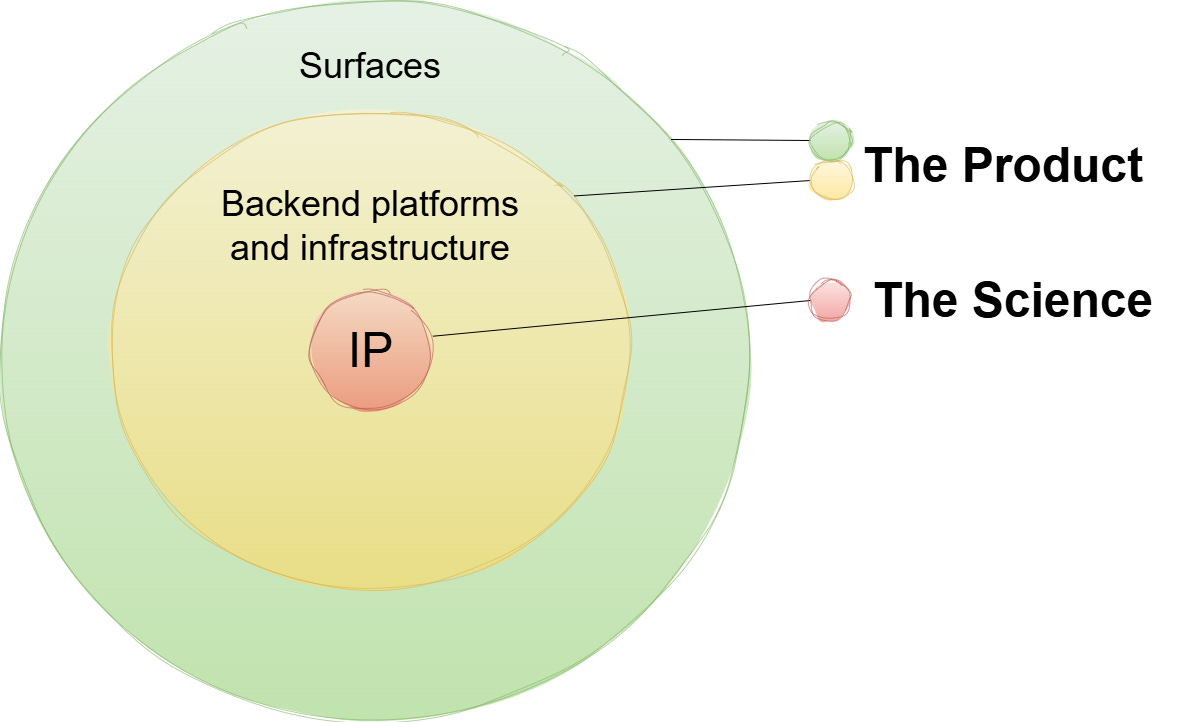How User-Centricity Defines Your Biotech Product
Your product is more than your IP
Scientists pour countless hours into fundamental research and developing novel intellectual property (IP) through patents. There’s a great sense of excitement when a patent application is lodged and inventorship is granted. At this point, the next logical step is to spin out that IP into a new company to deliver a radical new product to market. However, a critical element often gets lost during this exciting process: the user is at the centre of any product, even a science-based one. Furthermore, your product is more than just your IP—it is defined by who uses it and how.
Putting the User at the Heart of Your Product
When developing biotech products, it's easy to equate the product with the underlying technology or IP. While a robust IP portfolio is undeniably important, it doesn't automatically translate into market success. User-centricity is the cornerstone of creating products that not only solve real-world problems but also gain traction in the marketplace.
Why User-Centricity Matters in Biotech
Biotech products—whether they are diagnostic tools, therapeutic agents, or instruments—are designed to address specific needs within the healthcare ecosystem. These products must seamlessly integrate into existing workflows, meet regulatory standards, and provide tangible benefits to their users—be it clinicians, researchers, or patients.
Consider this: A revolutionary diagnostic device with unparalleled accuracy is impressive, but if it doesn't fit into the daily routines of healthcare professionals or if it's too cumbersome for patients to use, its adoption will be limited. Understanding the end-user's needs, pain points, and workflows is essential for designing products that are not only innovative but also practical and user-friendly.
Your Product is More Than Your IP
Intellectual Property represents the innovative foundation of your product, but it is not the product itself. A product is defined by its application, user experience, and the value it delivers to its users. Here’s how to think beyond IP:
1. IP as the Foundation
Your IP is the bedrock upon which your product is built. It encapsulates the unique technologies, methodologies, and innovations that differentiate your product in the market. However, relying solely on IP without considering user needs can limit the product's impact and adoption.
Imagine your IP as the core of a concentric circle:
Core Layer (IP): The central foundation comprising your unique technologies and innovations.
Foundation Product Layer: The backend platforms necessary to productise your IP into a service or product that delivers value to a defined user.
Surface Layer: The user-facing components, such as apps or API platforms, through which customers interact with your product.

2. Building Around the IP with User Needs
While your IP is critical, the surrounding layers—the user interface, integration with existing systems, and overall user experience—are what make your product valuable to its users. Building these elements around your IP ensures that the technology is accessible, usable, and truly addresses the users’ needs.
Example: If your IP is a novel biomarker discovery platform, the surrounding product might include user-friendly software that allows clinicians to easily interpret and apply the biomarker data in their diagnostic processes. This integration ensures that the powerful technology is accessible and practical for everyday use in clinical settings.
Case Study: User-Centric Design in Action
Practical Example: Personalised Diagnostic Tool
Consider a biotech startup developing a personalised diagnostic tool for cancer detection. Initially, the company focused heavily on the technological aspects, ensuring the tool's accuracy and expanding its biomarker database. However, despite the advanced technology, the product struggled to gain traction in clinical settings.
Shifting to a User-Centric Approach:
User Interviews: The product manager conducted interviews with oncologists to understand their specific needs and the challenges they faced with existing diagnostic tools.
Prototyping: Based on the feedback, the product squad developed a prototype that streamlined the diagnostic process, reduced the time to results, and integrated seamlessly with existing referral systems.
Iterative Feedback: Continuous testing and feedback loops with end-users ensured that the final product was not only accurate but also user-friendly and aligned with clinical workflows.
Outcome: By prioritising user-centric design, the startup significantly improved the adoption rate of their diagnostic tool, leading to successful commercialisation and improved patient outcomes.
Conclusion: Bridging Science and Market Success
The journey from innovative research to market-ready product is fraught with challenges. By placing the user at the centre of product development and viewing your product as more than just your IP, you can create solutions that truly resonate with your market.

